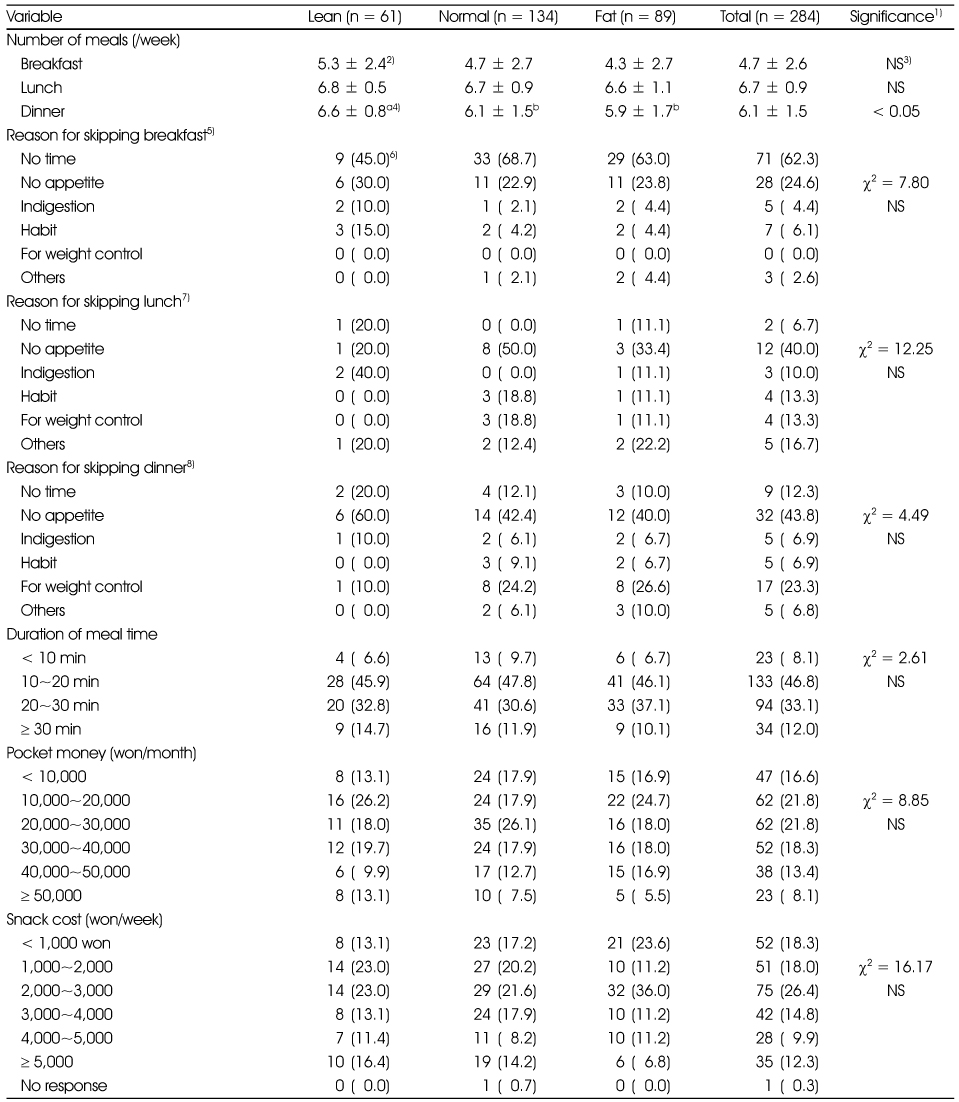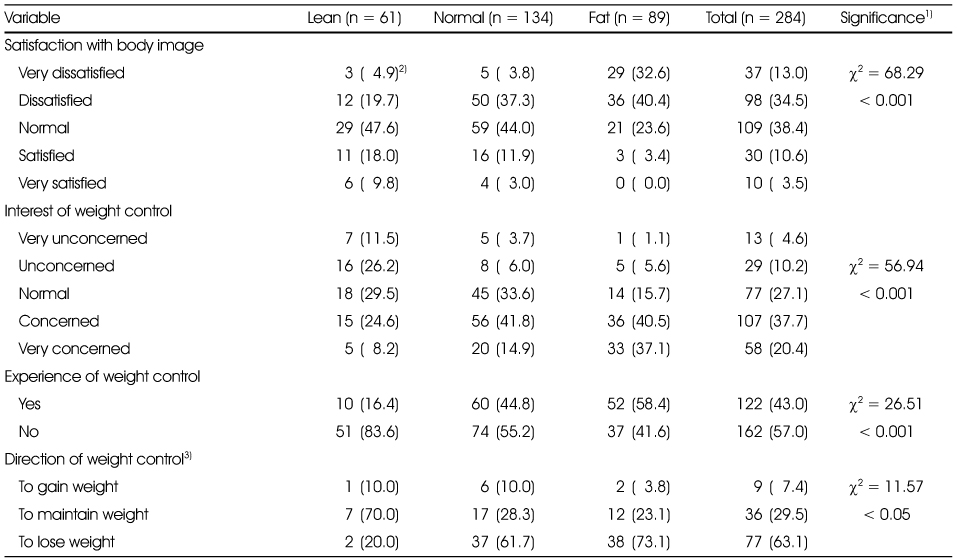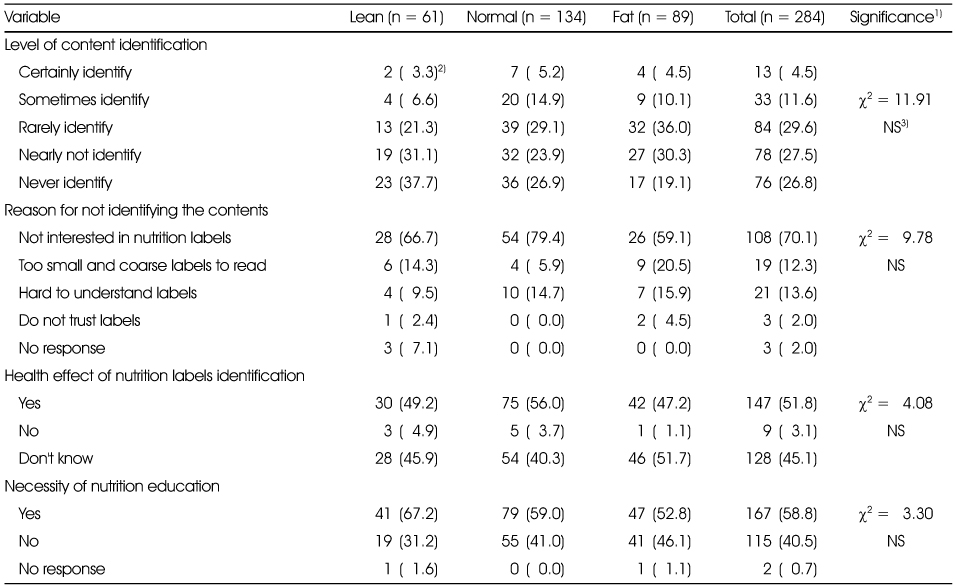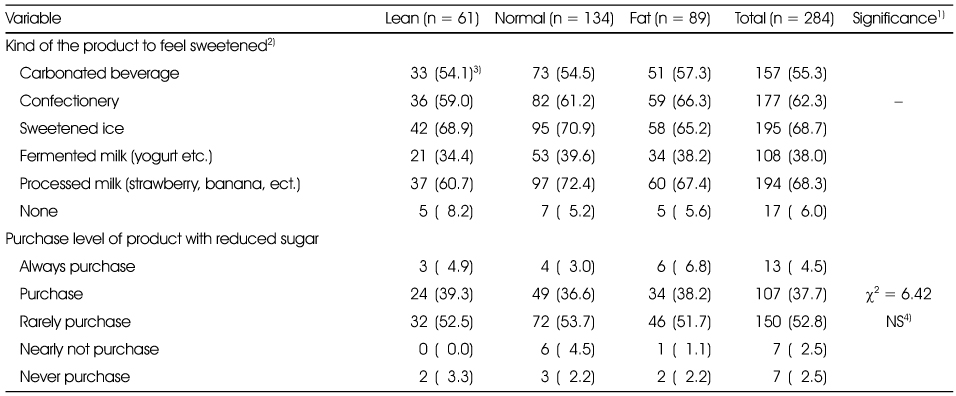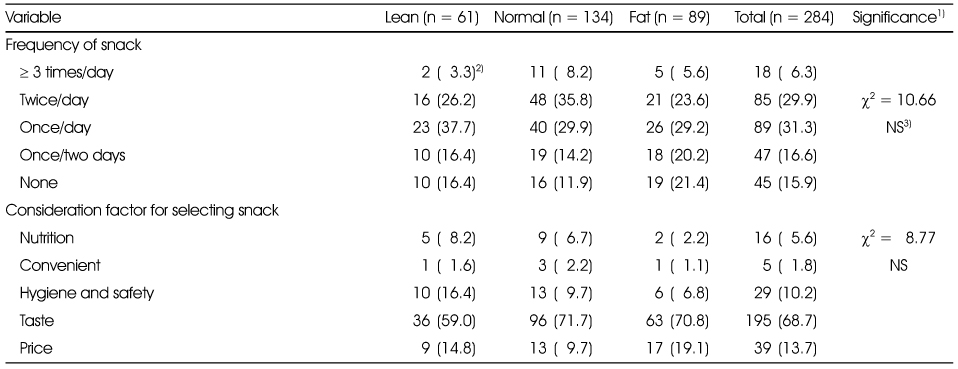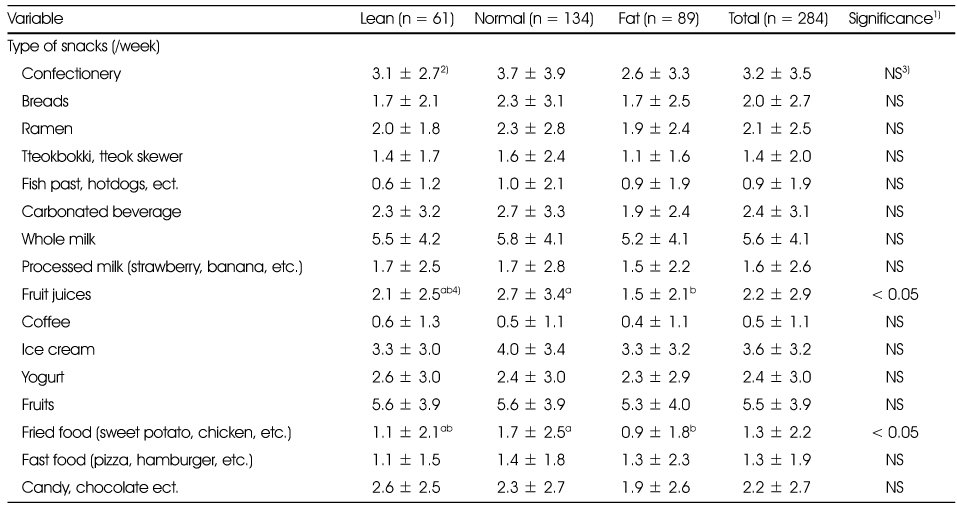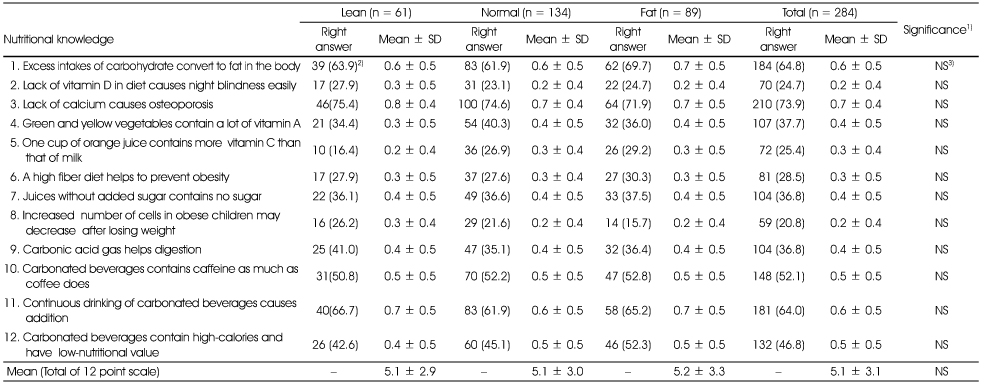References
1. Bae YJ, Yeon JY. Dietary behaviors, processed food preferences and awareness levels of nutrition labels among female university students living in middle region by breakfast eating. J Korean Diet Assoc 2011;17(4):387–402.
2. Brener ND, McManus T, Galuska DA, Lowry R, Wechsler H. Reliability and validity of self-reported height and weight among high school students. J Adolesc Health 2003;32(4):281–287.
3. Chung JY, Kim MJ. Using and understanding of nutrition labels and related factors among female adults in the Seoul area. Korean J Community Nutr 2007;12(4):417–425.
4. Cowart BJ. Relationships between taste and smell across the adult life span. Ann N Y Acad Sci 1989;561:39–55.
5. Doo MA, Seo JY, Kim YH. Factors to influence consumption pattern of snacks of middle school students in Ilsan area. J Korean Soc Food Sci Nutr 2009;38(12):1732–1739.
6. Eom HS, Jung MJ, Kim SB. A study on nutrition knowledge, dietary aittitide, food habit of middle school students in Chonbuk area. Korean J Community Nutr 2005;10(5):574–581.
7. Goh EY, Park ES. Intake of processed food and perceptions of food labeling in middle school students. Korean J Human Ecology 2010;19(1):179–189.
8. Han YS, Joo NM. An analysis on the factors of adolescent Obesity. Korean J food Cult 2005;20(2):172–185.
9. Hong KH. The influence of male college students' extent of mass media exposure on sociocultural attitude toward appearance and appearance orientation. J Korean Soc Clothing Text 2008;32(7):1149–1159.
10. Jang HS. Body image recognition, nutrition knowledge and nutrient intakes of middle school students according to the obesity index. J Korean Home Econ Educ Assoc 2006;18(2):97–110.
11. Jin YH. A comparative study on dietary habits and dietary attitudes among middle school students with different obesity indexes. Korean J Community Nutr 2002;7(2):156–166.
12. Korea Health Statistics [KHS]. Korea National Health and Nutrition Examination Survey (KNHANES V-2) 2011 2012. p. 388–413.
13. Korean Pediatric Society. The standard of body growth for Korean children and adolescent at 2007 Korean Center for Disease Control and Prevention; 2007.
14. Kim BR, Kim YS. Dietary behaviors, body satisfaction and factors affecting the weight control interest according to gender of middle school students in Wonju area. J Korean Soc Food Sci Nutr 2010;39(9):1295–1304.
15. Kim JE, Min HS. Weight-related perceptions, practices and eating behaviors of middle school students: associations with BMI. Korean J Community Nutr 2008;13(1):13–23.
16. Kim JH. Perception and utilization of food labels depending on educational experience with the food labeling syatem in middle school students. Korean J Community Living Sci 2009;20(1):51–59.
17. Kim JY, Son SJ, Lee JE, Kim JH, Jung IK. The effects of body image satisfaction on obesity stress, weight control attitudes, and eating disorders among female junior high school students. J Korean Home Econ Assoc 2009;47(4):49–59.
18. Kim KW, Shin EM. A study on nutrition knowledge, nutritional attitudes, dietary behavior and dietary intake by weight control attempt among middle school female students. Korean J Community Nutr 2002;7(1):23–31.
19. Kim MH, Yun YH, Choi MK, Kim EY. A study on body image recognition and dietary habits of middle school students in the Chungnam area. Korean J Food Nutr 2012a;25(2):338–347.
20. Kim S, Joung K, Chae B. Dietary life and eating-out style related to breakfast frequency of male students in culinary college. Korean J Community Nutr 2007;12(1):13–24.
21. Kim YJ, Jeon ER, Yoo MJ, Jung LH. Perception and utilization of food labeling system of middle school students in Gwangju. J Korean Soc Food Sci Nutr 2012b;41(6):796–806.
22. Kim HC, Kim MR. Self-perception of body image and dieting behaviors by gender amomg high school students in Gyeongbuk province. J East Asian Soc Diet Life 2011;21(4):587–599.
23. Kim YS, Kim BR. Intake of snacks, and perceptions and use of food and nutrition labels by middle school students in Chuncheon area. J Korean Soc Food Sci Nutr 2012;41(9):1265–1273.
24. Ko SY, Kim KW. Nutrition label use, self-efficacy, snacking and eating behavior or middle school students in Kyunggi area. Korean J Community Nutr 2010;15(4):513–524.
25. Lee JH, Woo JH, Chae HJ, Lee EH, Chyun JH. Study of dietary behaviors and snack intake patterns by weight of middle school students in Incheon. Korean J Food Cult 2010;25(4):366–377.
26. Lee JS, Ha BJ. A study of the dietary attitude, dietary self-efficacy and nutrient intake among middle school students with different obesity indices in Gyeong-Nam. Korean J Community Nutr 2003;8(2):171–180.
27. Lee JS, Yun JW. A study on perception about body image, dietary attitude, dietary self-efficacy and nutrient intake of high school in Busan. J Korean Soc Food Sci Nutr 2003;32(2):295–301.
28. Story M, Neumark-Sztainer D, French S. Individual and environmental influence on adolescent eating behaviors. J Am Diet Assoc 2002;102(S3):S40–S51.
29. Ministry of Food and Drug Safety [MFDS]. The report of sugar intake: 2008~2011 Cheongwon-gun: 2013.
30. Park JY, Ryu K, Jang HL, Yoon KY. Carbonated beverage consumption among middle school students in Daegu area. J East Asian Soc Diet Life 2010;20(2):201–208.
31. Park SS, Kim NY, Han MJ. Processed food preferences and food and nutrition labeling perceptions of middle school students. Korean J Food Cookery Sci 2008;24(2):164–173.
32. Ryu HK. A survey of adolescents' concern and perception about body image (at Miryang city). Korean J Community Nutr 1997;2(2):197–205.
33. Ryu HK, Park JA. Perception of body image, eating disorder, eating behaviors and subjective health status of female high school and college students in Daegu area. Korean J Community Living Sci 2002;13(3):69–80.
34. Sorensen TI, Stunkard AJ, Teasdale TW, Higgins MW. The accuracy of reports of weight : children's recall of their parents weights 15 years earlier. Int J Obes 1983;7(2):115–122.
35. Sung SH, Yu OK, Sohn HS, Cha YS. A comparison of dietary behaviors according to gender and obesity status of middle school students in Jeonju. J Korean Soc Food Sci Nutr 2007;36(8):995–1009.
36. Yeon JY, Hong SH, Bae YJ. A study on nutritional status and dietary quality of university students by body image. Korean J Community Nutr 2012;17(5):543–554.
37. World Health Organization [WHO]. World Health Organization (2000): The Asia-Pacific perspective: redefining obesity and its treatment World Health Organization Western Pacific Region. International Association for the Study of Obesity; 2000.

